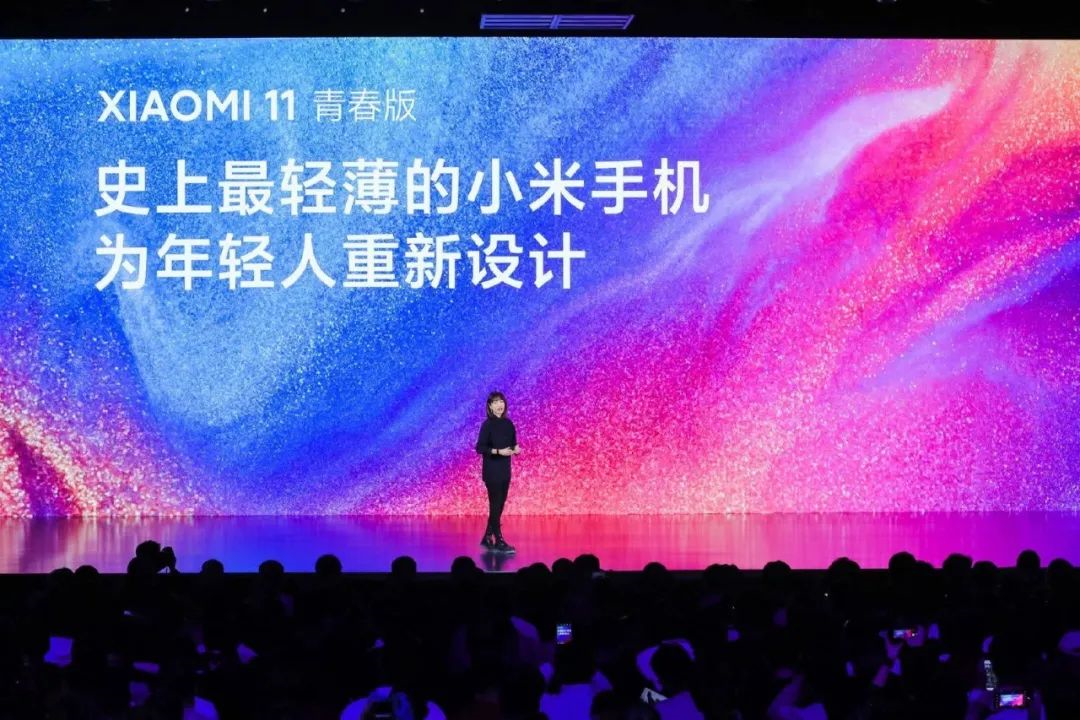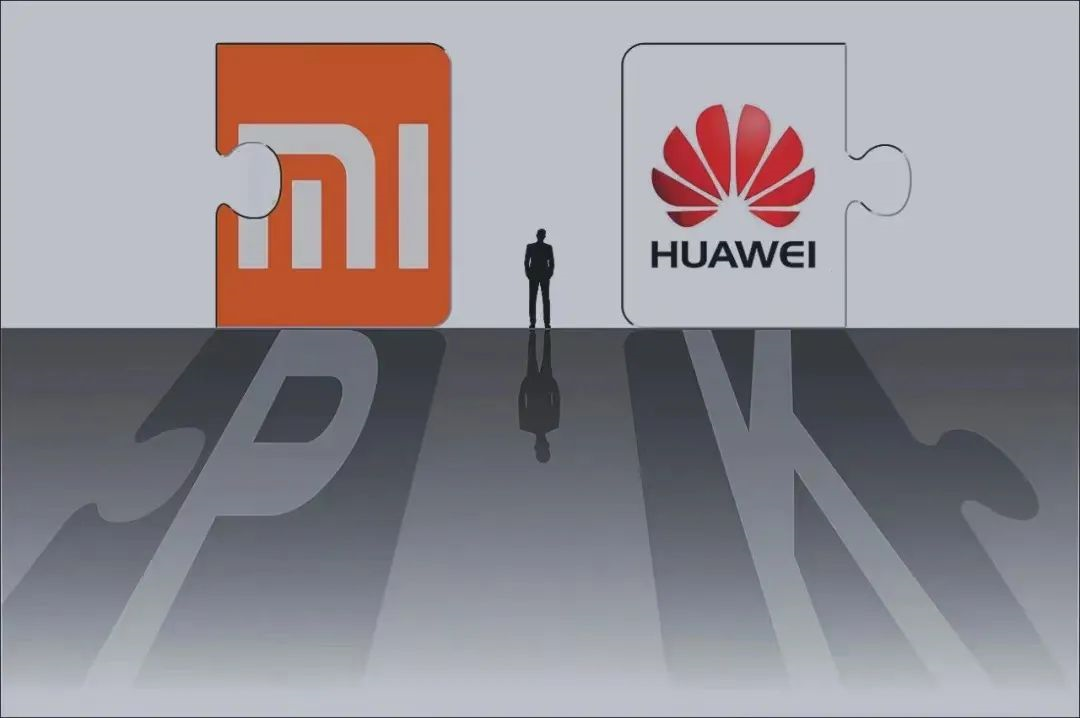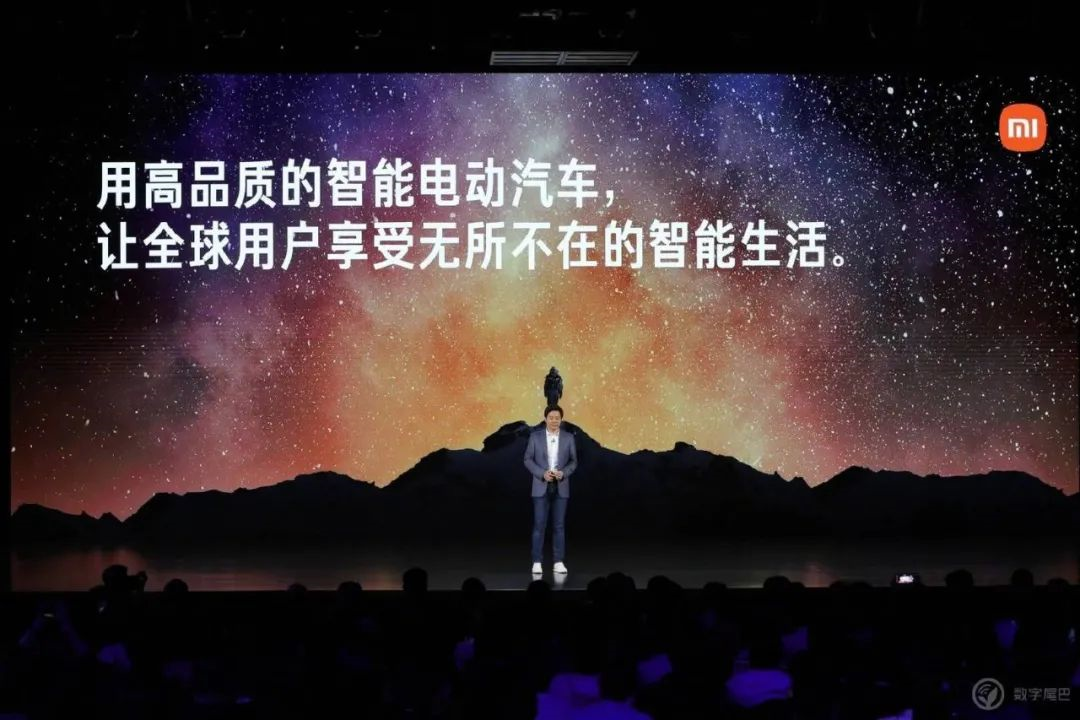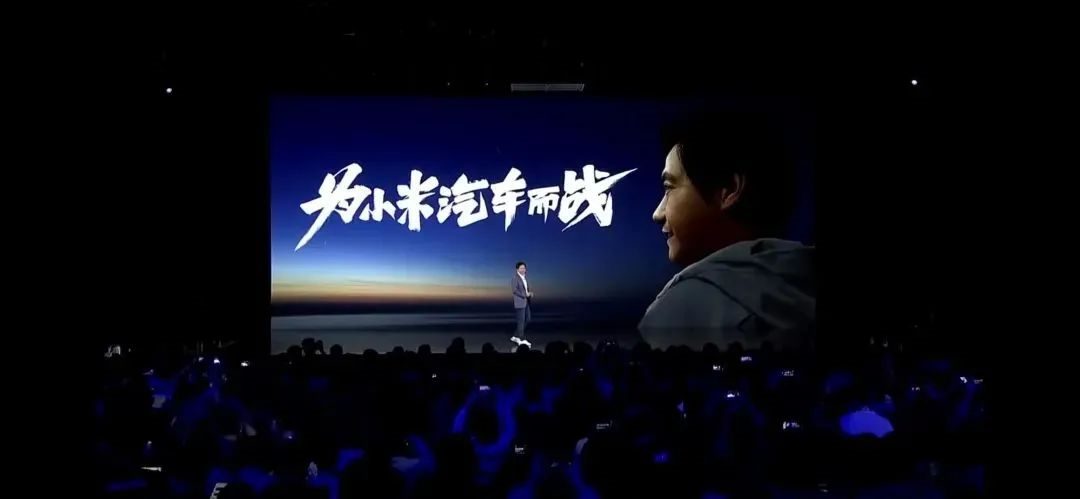*This article is reproduced from the official account of autocarweekly.
Author: Wo Shi Yiran
On the evening of March 30, 2021, the team from PossibleHIGH might have some regrets for choosing this day to hold a press conference. But they can’t be blamed, as Xiaomi’s press conference was actually held on the 29th – it’s just that nobody expected that Lei Jun would choose to hold it for two days straight. The next day, after the stock market was closed, Xiaomi’s car-making announcement ignited discussions across various circles, from the tech industry and home appliance industry to the automotive industry – everyone was talking about Xiaomi.
The discussions of the people pushed Xiaomi’s car-making project to the top of Zhihu Hot Search.
In Garage 42, it’s been a long time since users crazily joined a new brand’s discussion group. After founder Da Ji responded to too many requests to manually add people to the group, he had to helplessly instruct them to refer to the guidance provided by the intelligent assistant and apply to join the group themselves. I quickly joined a group and witnessed a heated argument among friends who had different opinions on the Xiaomi electric car. I didn’t care about what they were arguing about. The fact that they were arguing itself is an indicator. How many brands are worth getting into arguments about nowadays?
In the PM Club, a group of nearly 300 professionals involved in the electric vehicle industry, the “High” 2021 evening they’ve been discussing finally arrived. Besides group chatting, I also hosted a local version of Clubhouse dialogue using Tencent Meeting for the first time, and had 40 classmates discuss together for a full 80 minutes before I forced them to stop.
Clearly, tonight belongs to the Xiaomi electric car.
It has become the most eye-catching player in the second wave of new forces in car-making. You can safely remove the words “one of” and your competitors won’t have the audacity to sue you under false advertising.
Why is it highly anticipated despite being an outsider in the industry?
At 12 a.m., I received a call from a senior industry peer. We only talked about one topic – why did Xiaomi only hold one press conference, didn’t even make a concept car, and almost had no pictures of cars in their PPT (only an old-fashioned gas-guzzling motorhome design) yet still received such attention and anticipation from many people?
To answer that, I have to talk about how Xiaomi was founded 11 years ago…
Skipping the lengthy conversation for half an hour, we summarized our core points into 5 aspects:
Category Attributes
Xiaomi has created a brand for intelligent consumer and industrial manufacturing products that has international and especially Chinese influence. Simply put, its core is a smartphone brand. The first attribute that needs to be emphasized here is the category attribute of smartphones.The phone is indeed small, and the car is indeed large. However, there is some commonality between phones and cars: they are both consumer products of industrial production. This lays the foundation for positive associations and brand value transfer between the two categories.
Can you imagine buying an electric car from a food delivery company that launches it three years later? Can you imagine buying an electric car from a specialized car rental company that launches it three years later? Can you imagine buying an electric car from a company that specializes in entertainment news videos or information search that launches it three years later? To put it more plainly, Coca-Cola and Durex are both famous, but would you really spend money on a car that carries their logo?
It is possible, but the greater the difference between the categories, the greater the difficulty of brand value transfer.
Recently, my team and I visited dozens of electric car users from different brands and price ranges, which to some extent verified the above judgment.
We threw out a hypothetical question, “If Apple, Huawei, Xiaomi, DJI, Baidu, Didi, and Evergrande all made cars and released them together three years later, which one would you prefer to buy or have greater confidence in?” We hoped to indirectly see whether users were more inclined towards classic mainstream or innovation and change, and what kind of changes they were looking for in future electric car brands.
The results were very interesting. The protagonist of this article, Xiaomi, did not rank first but belonged to Huawei, and was clearly leading. Xiaomi and Apple ranked second together, with their own fans. Evergrande came in last, disliked by no one, and even some questioned whether it was a typo in the question.
In many cases, launching a new brand in a full category will face significant disadvantages. Because you lack accumulation, users lack trust. However, in this once-in-a-century upheaval in the automotive industry, things are different.
Recently, I watched a professional program called “DongChe Talks” on DoncCheDi, in which McKinsey’s Global Managing Partner and China Automotive Leader, Ray Tsang, was invited to share. Ray talked about a phenomenon: China’s high-end electric vehicle market, which we define as a sub-market with a sales price of over 200,000 yuan, is almost entirely controlled by new electric vehicle brands. McKinsey’s research shows that in China’s pure electric vehicle customer base, the proportion of the option “Because the brand I like only offers electric vehicles, I bought this brand’s electric car” has risen rapidly from 10% in 2019 to 15% in 2020, an increase of 50%.
Seeing McKinsey’s research results resonated with me because I recently conducted an electric car user research project myself and saw the exact same trend. I believe that when users face a completely innovative new category (Electric and Fuel-powered vehicles may be treated with rigor by engineers, but in the eyes of users, they are already two different categories), their inner desire is for a brand that is completely innovative. For many users, the subconscious desire is not to see a logo that smells like gasoline again.I still remember what my little nephew said to me when he bought his new phone in 2012. Of course, I questioned why he did not choose Nokia or Motorola, but instead bought a model called Xiaomi 2, a brand name that sounded very strange. He said, “Uncle, you don’t understand! Xiaomi is a smartphone specially designed for young people like us. Nokia is still producing traditional feature phones.”

Brand Reputation
When it comes to brand awareness, many big companies have a high level of recognition, such as Evergrande, Wanda, Lenovo, Mengniu, and Gree, as they are very well-known. However, to measure a consumer brand from excellent to outstanding in the era of mobile internet, it depends on how many people have strong passion for the brand.
Apple, Nike, Harley Davidson, Costco, Tesla, Nio, Allen Iverson (yes, that bad boy from NBA), Luo Yonghao, and Xiao Zhan have a common characteristic: regardless of how many people dislike these brands, there is always a group of people who are passionate about them. Such brands often have stronger user cohesion and unique competitive advantages.
Xiaomi is clearly among them. This start-up company has achieved Top 3 smartphone sales scale globally, not by Apple’s unparalleled ecology and software capabilities, nor by Huawei’s massive resource investment in solid self-developing capabilities, nor by Samsung’s deep control of upstream and downstream industry chains. Instead, Xiaomi’s core lies in its ability to capture user demands and communicate with users, thus molding a great soulful consumer brand, which has won the love of many Mi Fans.
Terrible Brand Decision makers often like to come up with a new story to please themselves and dupe the world. Excellent brand decision makers are always uncreative repeaters, duplicating their own story. Xiaomi is now 11 years old. At today’s press conference, Lei Jun kept repeating the story he has been telling since the first year: Xiaomi’s attentiveness to users and the love between users and Xiaomi.

 # Translated Markdown text with HTML tags
# Translated Markdown text with HTML tags
When it comes to making cars, Lei Jun did not say that it was his own decision. He said that Xiaomi conducted a survey on making cars, and 92% of users said they would buy Xiaomi’s electric car if it was launched. The one who wins the hearts of the people wins the world. Despite the complexity of the automotive industry technology, it is ultimately a consumer goods industry. In terms of capturing user needs and shaping brand attractiveness, Xiaomi has great advantages.
It’s not just Xiaomi users who love Xiaomi, in fact, the whole society has a wide-ranging recognition. Sun Shaojun, a well-known automotive retail channel expert on Zhihu with ten years of experience, shared a very fresh first-hand information recently. The new Volkswagen ID4 series was launched, looking for commercial district venues in various regions. Volkswagen tried to negotiate with a high-quality commercial district that they were interested in opening a store, but were refused. The reason for the refusal may seem absurd to those in the automotive industry. The other party felt that the Volkswagen brand was too traditional and had weak passenger flow attraction. They would prefer to introduce the new forces at the top or brands like Huawei and Xiaomi. Sun says this is not an isolated incident, and he has heard of two similar situations himself.

User scale
There is no need to say much here, just sharing some numbers.
Since the launch of Xiaomi 1, Xiaomi has been in continuous operation for ten years.
In 2020, Xiaomi Group achieved 146 million shipments of smart phones, a year-on-year increase of 17.5%, and the average selling price of smart phones increased by 6.1% year-on-year to 1039.8 yuan per unit. Xiaomi IoT connected devices reached 325 million, a year-on-year increase of 38.0%. The number of users with five or more devices connected to the IoT platform reached 6.2 million, a year-on-year increase of 52.9%.
Many people may be concerned about the limited payment capability of Xiaomi users. But actually, this won’t be a problem. Because after the scale gets larger, there will always be a portion of users with relatively high budgets. Xiaomi’s user base is constantly growing. Young people who bought Xiaomi phones for one or two thousand yuan seven or eight years ago may now have successful careers, their consumption vision has improved, their life stage is changing, and their consumption ability will be upgraded.
In 2020, Xiaomi sold 10 million units of high-end smartphones priced over 3,000 yuan in mainland China or over 300 euros overseas. Although the proportion is not high compared to the global shipment volume of 146 million, the absolute number is quite objective. The users behind these 10 million high-end phones are the most accurate target customers for Xiaomi electric cars in the early days.

Ecological synergy
When starting any strategic initiative, you always ask yourself one question: what makes you stronger than the competition? The core of any product launch event is to answer this question.Due to Lei Jun’s frank admission at the press conference that the formal research on electric vehicle business did not begin until January 15, 2021, there is obviously nothing to announce right now. I believe this will also be the criticism of the release of Xiaomi’s electric vehicle from outsiders: too much emotion, too little substance.
However, I think Lei Jun has actually hinted to the outside world about Xiaomi’s killer application for electric vehicles. One is the brand and users mentioned above. Another is the ecological advantage of the product.
Lei Jun’s exact words on stage were “high-quality smart electric vehicles for users to enjoy an omnipresent smart life globally.”
He also said that the reason why the company is 100% owned by Xiaomi is to carry out ecological coordination more fully and thoroughly, enabling cars, mobile phones, and tablets to achieve seamless connection. 100% ownership means that other Xiaomi’s old businesses, such as mobile phones, will devote their resources entirely to the Xiaomi electric vehicle company.
We have all seen the synergy between Apple’s phones, headphones, laptops, tablets, cloud services, music, movies, and maps, and the user experience and lock-in it brings. Now imagine this synergy extended to cars, what will happen?
Users always prefer simple, consistent, and ultra-low learning cost experiences. No one wants to sit in a car and have to say “Hello BMW” to activate the ABC function, “Hello Zebra” to activate the DEF function, and “Hello Tmall” to activate XYZ. This forces the user to understand the Tier1 layout of a complex industrial product. This will be a tragedy of experience, but it is happening in this new era of “cars + the internet.”
Among the potential players in the electric vehicle industry, only three companies globally have the most potential for this ecological synergy advantage – Xiaomi, Huawei, and Apple. They all have cross-category large-scale smart hardware, significant software development capabilities, and very influential consumer brands. Xiaomi is the first to make a move.
In the second round of the new car-making movement, there are state-owned enterprises, private enterprises, car manufacturers, travel service providers, search engines, and automatic driving experts. However, among the players currently announced, there is no one who has personally rolled up their sleeves like the big bosses.A few days ago, I was discussing with a friend about Xiaomi’s car manufacturing, and my friend asked me for my opinion. I said that it all depends on whether Lei Jun himself gets involved. An entrepreneur who has proven himself repeatedly can either make or break the game, depending on whether they choose to take a leading or a pioneering role. Li Bin, He XPeng, and Li Xiang ranked among the top three in the first round of new car manufacturing, which is definitely not by chance.
A car is a completely different product from everything else, and many of the decisions here involve costs in the billions and validation cycles that last for years. How much creation space is left for managers to work with? It is difficult for those outside of the industry to understand.
Some former colleagues from NIO who were formerly efficient found themselves working much slower after switching to a new company. After careful analysis, it turned out that things that they could just do before, now require a report. Reporting alone is not enough, they also need to create a good PPT and present. Even if they report, it may not be useful as the leader may reject it. Even if the leader does not reject it, it may still not be useful, as they may ask for more research.
Who would want to end up like Carlos Ghosn, who was like a hero and saved a failing Nissan, only to be turned into a sacrifice in the struggle between Renault and Nissan? Ghosn had a salary in the millions of euros, but he was still just a manager.
Lei Jun’s decision to get involved in Xiaomi’s car manufacturing business is a great opportunity, but also a hidden concern for the company’s main business. After all, a person’s management radius and energy are limited. Additionally, both Huawei and OPPO are strong competitors. As a company that is already very large, with a diverse business, and has been constantly emphasizing focus and subtraction in the past two years, Lei Jun’s decision to get involved or not is undoubtedly a difficult choice.
Yesterday’s Xiaomi press conference was divided into three parts.
The first hour and a half was the main event, where Xiaomi presented new products, including phones, air purifiers, and laptops, among others. To be frank, Lei Jun, who was overwhelmed with work and feeling unwell, may not have been able to prepare himself properly and perform at 100%. In some cases, he even relied on team members to present products on stage.
The next 15 minutes served as a transition, where Lei Jun delivered a personal inspirational speech on the theme of “transformation,” reviewing the three major turning points of his life. Starting from this part, Lei Jun gradually entered his ideal state, and the cold virus was temporarily suspended due to his inspiring speech. Lei Jun also lowered the number of times he looked at the teleprompter (next time, it is recommended that Xiaomi use a teleprompter that is placed further away and at a higher position).
The last 25 minutes presented the climax of the event, where Lei Jun talked about Xiaomi’s intention to manufacture cars. With generous words, a passionate mood, and unwavering confidence, Lei Jun conveyed an unparalleled sense of hunger and relentless pursuit that reminded the audience of the Xiaomi of ten years ago, during the launch of the Xiaomi 1 at the 10-year anniversary event.
Can Xiaomi’s foray into the car industry bring success?
In his latest presentation, Lei Jun repeatedly showcased photos of himself in running gear as he gambled his life’s work and reputation on one last major entrepreneurial venture in the form of Xiaomi’s new car division. Through his words and images, Lei Jun strives to portray both his own restart of entrepreneurship and the determination and perseverance of Xiaomi’s car division. (It must be said that Xiaomi’s presentation was top-notch, with a well-crafted pace and attention to details. While personally, I still feel that NIO is slightly ahead of Xiaomi.😝)
Despite writing over 3000 words detailing the advantages of Xiaomi’s car division, in order to avoid this article becoming a mere advertorial, I have decided to write at least 1500 words on non-positive topics to provide a counterbalance.
Lei Jun and his team will face three enormous challenges.
Firstly, they must find resources, including talent and supply chain resources.
In just over six years from the end of 2014 to the beginning of 2021, a particularly active and innovative new wave of Chinese car companies and their supply chains has emerged. Whilst disregarding scammers and middlemen, this new wave has attracted and fostered a significant number of industry talents, with attraction clearly outweighing nurturing.
Starting in 2020, a second wave of new car makers has begun to surface, with CEOs, HR specialists, and headhunters clearly knowing that it is particularly difficult to find people truly knowledgeable about cars and experienced with entrepreneurship. This is because the talent market is a short-term zero-sum game, with successful companies such as Tesla, NIO, XPeng, and Li Auto having already claimed a large portion of the talent pool, while it is unlikely that the market can generate a large number of new talents out of thin air to fill the gap.
As demonstrated repeatedly, if you lack an in-depth understanding of automobiles, you will have to pay a hefty price. When moving from zero to one, work skills and methodologies become particularly important compared to knowledge of the industry, products, and markets. Similar to the way Soviet representatives, Wang Ming, and Bo Gu, who were knowledgeable about classical revolution theories and methodologies, but unable to understand the essence of Chinese workers, peasants, and the Chinese revolution, they were unable to direct the Workers’ and Peasants’ Red Army effectively.
The supply chain also presents a similar challenge, with high-quality resources being scarce. As exampled by Pan Changxing, the project director for Iggnition automotive group who shared on the Highway Flying PM Club group: “Since the second half of last year, the excellent supply chain has been experiencing severe capacity shortages. On average, we have hosted 2-3 customer visits or responded to pricing inquiries every week. To control business risks, several meetings are usually required to assess the economic strength and potential cooperation value of OEMs before deciding whether to proceed.” The current situation in the automotive industry isn’t just about OEMs selecting suppliers, but also the fact that high-quality suppliers are being extremely cautious about selecting OEMs.
Present new-wave automotive companies don’t possess a very strong systematic capability, and are only likely to succeed in the talent and resource war by getting a head start. As the founder of Gelanru Automotive Consulting, Zhu Kai commented, “With commercial stores becoming the trendy choice for automotive brands to connect with consumers, some electric car brands will actively sign agreement collaborations with these stores, which will make it harder for latecomers to find good offline channels.”# Markdown Text in English
When there are many voices and numerous varieties, the resources tend to quickly concentrate on the heads because everyone is playing with their cards face up. This is an experience that can be observed from history.

Secondly, brand upgrade is to reshape a car-class brand.
Many years ago, I watched a movie with a line that impressed me deeply. A foreign actor expressed his contempt for Chinese-made products while imitating a Chinese accent. It went something like this: “I love made-in-China things! My lighter, my tie, my suit are all made in China. But when it comes to buying a car, I will never choose a made-in-China one!”
In the same way, many Xiaomi electric vehicle critics will say: “I love Xiaomi! My phone, my TV, my router, my laptop, my charger, my air purifier, my water purifier, my air conditioning, my toothbrush, and my sweeping robot are all made by Xiaomi! I’m a die-hard Xiaomi fan! But if you ask me whether I want to buy a Xiaomi electric car, then I will definitely not choose Xiaomi for that.”
Firstly, a brand has certain boundaries when it comes to crossing categories, and there is a hierarchy of contempt between different categories. Cars and Xiaomi’s brand, which are both strong in their respective fields, are indeed two different things. Another reason is that Xiaomi has not been known for its workmanship, reliability, and lifespan in its past history.
One of the members of the PM Club, a user of Xiaomi products, said directly: “Users of fast-moving consumer goods do not have high requirements for reliability and lifespan, price, and they will not use them for a long time, they will just throw them away. But users view cars as an asset for their family. This is a different matter. Xiaomi’s quality control in the fast-moving consumer goods field is also somewhat shaky.”
As a long-time user of Xiaomi, I feel that they often produce products with 6 points of quality at an 8-point performance price, but it is not high performance nor high quality. In fact, the failure rate may be higher than that of traditional big brands in the same category.
How will Xiaomi respond to these simple user questions and how will a company with no experience in car manufacturing can create true car-class quality and ultimately elevate the Xiaomi brand into a car-class brand is a big challenge.

Thirdly, there is an unprecedentedly strong opponent.
Let’s take a look at the strongest opponents that Xiaomi has encountered in its history.
When Xiaomi started its mobile phone business from scratch, there were many competitors. New forces included Apple, while traditional large players included Nokia, Motorola, HTC, and Lenovo. This was a very difficult battle as Xiaomi had no human resources, no supply chain, and no money to start with. Competitors were numerous and varied, each having their own strengths.After a wonderful breakthrough, Xiaomi once dominated the Chinese smartphone market. The following battles seemed less difficult. When entering the smart TV market, Xiaomi’s biggest opponent was the radical Letv, followed by traditional TV manufacturers such as Hisense and TCL that had a more stable pace. After Letv’s financing chain broke, Xiaomi didn’t encounter significant challenges. When entering the laptop market, Xiaomi faced a group of mainstream old factories and was unique. Although it may not obtain a large market share, it can still succeed through unique design and give users a feeling similar to that of a Macbook.
For air purifiers, smart speakers, power banks, Xiaomi’s pace is ahead, and with their strong advantages in terms of scale, brand, and self-owned channels, it is no surprise that Xiaomi has achieved success in various sub-markets.
However, the automotive industry is completely different. This time, Xiaomi’s opponents are probably stronger than the ones they faced 11 years ago. In terms of traditional car companies, there are Volkswagen, Toyota, BMW, and Mercedes-Benz, and in terms of new forces, there are Tesla and NIO. Companies like Apple, Nokia, and Lenovo that they encountered in the past can now easily come back and multiply greatly in scale.
Xiaomi is a young company with a founder’s DNA, strong internet software capabilities, and understanding of local users’ needs. They relied on these differentiation advantages to surpass mainstream and international giants back then. Today, it seems that the competition with NIO will also have some of these characteristics, but the company has an incredible cash reserve of hundreds of billions of RMB and will likely double after listing in Hong Kong.
In addition, the founders of BYD, Great Wall, and Geely are still active and provide increased vitality and momentum compared to Lenovo in the past. It does not need to be mentioned that Tesla is similar to Apple in some ways, but their pursuit of affordability is not like Apple, but more like Xiaomi.
If the research started on January 15th, and it was officially announced yesterday, Xiaomi is still recruiting and building teams and establishing a supply chain, and even with a 996 work schedule, the new car is unlikely to be delivered to customers until 2024. By that day, if nothing unexpected occurs, I estimate that NIO’s annual sales will exceed 200,000, which is similar to the size of Lexus in China, and the average price will be higher than that of Lei car. XPeng’s annual sales will likely reach 300,000, becoming the first smart EV with high performance and cost-effectiveness for young people. The NGP of XPeng has probably iterated to version 5.0, with laser radar standard.
On that day, will consumers choose a brand-new Xiaomi, or a seemingly well-known and mature technology brand like XPeng?
How will Xiaomi achieve their differentiation market position and make a successful breakthrough against strong competition in the electric vehicle market?In the mentioned “Dong Che Talks”, McKinsey disclosed another research result. In 2020, there were 40 car brands with sales volume above 1,000 units in the United States, 39 in Germany, 26 in Japan, while China had a whopping 101. China has the richest selection of car brands in the world for users to choose from.
However, faced with so many options, Chinese users are becoming more and more focused. In 2019, the initial list of brands had an average of 2.7 brands, which had decreased to 1.9 in 2020. This means that when users actually buy a car, they only choose between two brands. 60% of users end up buying a car from one of the two brands they initially considered.
Despite many car enthusiasts on platforms like Dong Che Di and Zhihu, who are familiar with various car brands and their developments, typical users do not consciously absorb car knowledge. As a typical digital product user myself, I never pay attention to new products in the laptop or phone industry. I just mindlessly update my Apple products and at most glance at Huawei and Xiaomi.
When a typical user suddenly wants to change their car, they will access a limited number of brands subconsciously, then selectively learn about them and receive opinions and suggestions from others. In short, if you praise the brand that they are inclined to buy, they are likely to agree with your reasoning. If you criticize the brand, they will perceive you as someone who doesn’t understand cars and look to someone else for advice. If a brand cannot enter a typical user’s subconscious mind, it is basically out of contention.
With Lei Jun entering the car-making industry, it’s probably the most interesting time for this sector. Apple had already entered the industry, but has not officially announced anything. Xiaomi has just decided to enter and immediately made it public. From the perspective of the maturity of the industry chain, it’s highly likely that the entrepreneurial pioneers will be the first, followed by Apple, and then Xiaomi will quickly follow, and the industry will reach its peak.
Xiaomi has a clear attitude towards car-making, and I believe they have anticipated these difficulties and other challenges mentioned above.
Yesterday, Lei Jun was obviously nervous, as can be seen from the scale of his speech at the conference. He said it was his last major entrepreneurship, that he is betting on his life’s accumulation and reputation, and that “we have money.”
Would Lei Jun speak like this if Xiaomi was only entering a wireless earphone category?We all have such life experience. When do you speak the most? Generally, it’s during moments of confession, proposal, election, funding, recruitment. Because in these moments, you don’t have complete confidence, the other party may not follow you. Therefore, you need to step out of your usual self, speak the harshest words, blow the biggest horn, play the most sincere drama, and create the biggest scene!
Only when you walk the path that no one has gone before, do you need to light up the lamp, and you need to shout loudly and cheer yourself up when facing a potentially unbeatable opponent.

But for Xiaomi, this is a good thing.
Repeatedly winning a battle that you are sure to win can not be recorded in history again.
Finally, I would like to congratulate Lei Jun and Xiaomi. Lei Jun, like Li Bin, is the Chinese entrepreneur that I admire the most. Xiaomi is a consumer brand that I have liked for many years.
I hope that such characters and brands can overcome all known and unknown difficulties and finally succeed!
This article is a translation by ChatGPT of a Chinese report from 42HOW. If you have any questions about it, please email bd@42how.com.